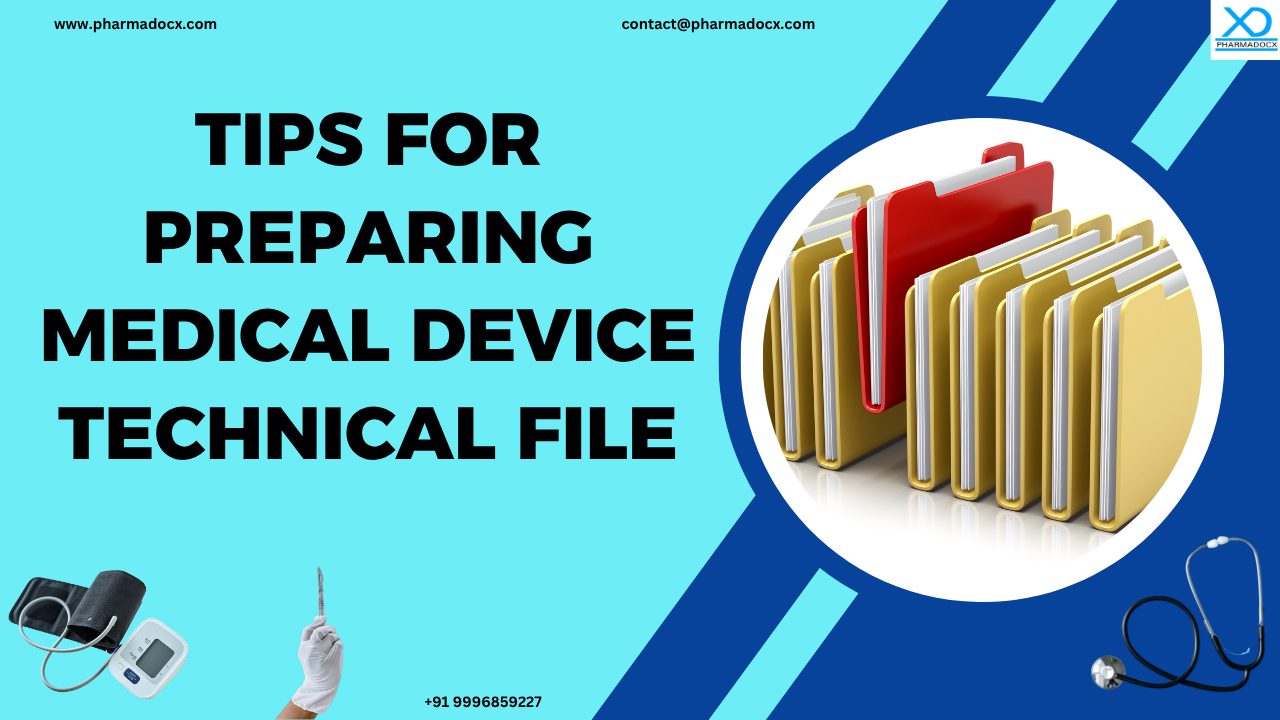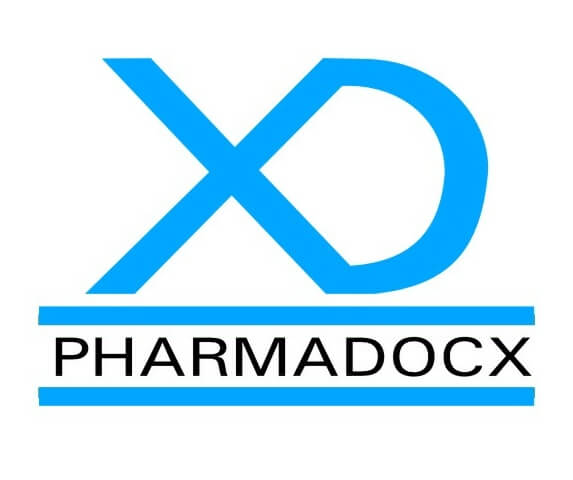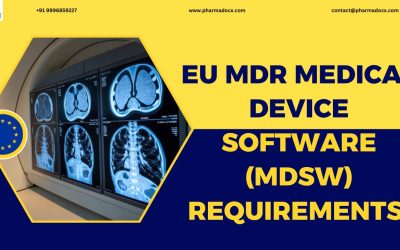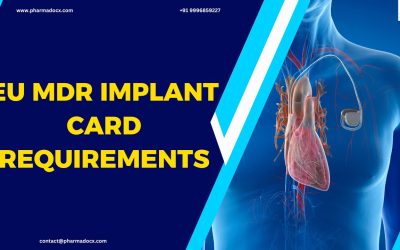A medical device technical file is a structured dossier that contains all essential documentation required for demonstrating regulatory compliance. Additionally, it is used to demonstrate the medical device’s safety, performance, and quality to regulatory authorities. Regulatory bodies of most countries will demand a technical file as a part of the regulatory submission. We have provided some pro tips to help you prepare the medical device technical file for regulatory compliance.
What is a medical device technical file?
A medical device technical file is a comprehensive set of documents that demonstrates a medical device’s compliance with applicable safety and performance standards set by regulatory bodies.
8 key components of technical file:
- Device description: This section offers a comprehensive overview of the device. It includes the device’s name, intended use, classification, design, materials, components, accessories, technical specifications, and variants.
- Design and manufacturing information: This section mentions the device’s design process, manufacturing methods, materials used, and quality control procedures. Additionally, it includes manufacturing sites and subcontractors involved.
- Risk management: This outlines the systematic process of identifying, analyzing, and controlling potential risks associated with the device throughout its lifecycle. Moreover, it highlights ISO 14971-compliant risk analysis and mitigation strategies.
- Clinical evaluation: Clinical evaluation is an important section of the technical file. It includes a clinical evaluation plan and report, supported by clinical data, studies, literature reviews, and post-market surveillance data. This section focuses on demonstrating the device’s clinical safety and performance.
- Product verification and validation: This section is used to evidence the device consistently meets design specifications and user needs. This section provides test reports for biocompatibility, electrical safety, software validation, sterilization validation (if applicable), and shelf life.
- Labelling and instructions for use (IFU): Information for users, including warnings, contraindications, and proper usage instructions are mentioned in this section.
- Post-market surveillance plan: A plan for monitoring the medical device’s performance and safety after it is launched in the market is detailed in this section.
- Quality management system: ISO 13485 certification, internal audits, corrective action and preventive action (CAPA) are mentioned in this section.
Country wise specifications for technical file
We have provided an overview of the requirements for the medical device technical file in different markets across the globe.
- U.S.: In U.S., the technical file should include design history file (DHF), device master record (DMR), device history record (DHR).
- EU: In the EU, the technical documentation (Annex II & III of MDR) is the requirement for technical file.
- Canada: As per Health Canada requirements, license application and QMS evidence comprise the technical file, which focuses on safety, effectiveness, medical device labelling, bilingual instruction for use.
- India: CDSCO, the apex medical device regulatory in India, requires device master file and plant master file as a part of the technical file.
Best practices for managing technical documentation
- Follow internationally applicable standards: While preparing the medical device technical file, it is advisable to follow internationally acceptable standards for the medical device industry. For example, use ISO 13485 for the quality management system section and ISO 14971 for the risk management section.
- Organize the documents logically: Use headings, numbering, and clear structures to prepare the technical file.
- Ensure clarity and accuracy: Use clear and concise language and avoid ambiguity. Moreover, validate all claims with supporting evidence.
- Use eQMS software: Use an eQMS software to streamline documentation and ensure audit readiness. The software can streamline the creation, management, and control of technical documentation, ensuring compliance and easy accessibility.
- Update the file throughout the product lifecycle: Regularly update the technical file to reflect design changes, manufacturing process updates, and post-market surveillance activities.
- Consult experts: Consult medical device regulatory consultants. They can assist you in navigating complex regulatory requirements, thereby ensuring completeness and accuracy of the technical file.
Importance of medical device technical file
- Demonstrating safety and performance: The technical file provides crucial evidence proving the device is safe for patients and users and performs as claimed by the manufacturer.
- Regulatory approval and market access: Medical device technical file is a mandatory requirement for obtaining regulatory approval to sell devices in the respective markets.
- Ensuring ongoing compliance: The technical file has to be constantly updated to reflect design changes and manufacturing process updates. It is used to demonstrate continuous compliance with regulatory guidelines. Regulatory authorities may inspect the documentation during audits or in case of issues, even after the product is in the market. Hence, it is vital to keep the documentation constantly updated.
- Facilitating troubleshooting: The technical file can help identify and resolve issues or malfunctions.
12 Pro tips for preparing medical device technical file
A robust medical device technical file is vital for securing regulatory approval and ensuring the long-term compliance of your medical device. We have provided some tips to guide you:
- Understand applicable regulatory standards: The first step is to thoroughly understand the specific regulatory requirements applicable for your medical device. Additionally, understand the target market regulatory guidelines. Moreover, understand internationally accepted standards, such as ISO 13485:2016 for quality management systems and ISO 14971 for risk management. Prepare your documentation per these requirements from the outset to avoid delays and rejections.
- Plan your documentation strategy: Develop a detailed plan outlining the content and structure for each section of the medical device technical file. Define the design and development stages, review points, verification and validation activities, and resource allocation.
- Ensure accuracy, completeness, and consistency: Double-check that all information in the file is accurate, up-to-date, and consistently presented throughout the document. Additionally, thoroughly check for compliance with regulatory guidelines. Moreover, cross-references to other documents, such as certificates and regulatory records, should be done properly. Use consistent terminology across the documents. Furthermore, avoid abbreviations or jargon that might be unfamiliar to reviewers.
- Structure the documents clearly and logically: Use templates and checklists to properly structure the documents. Organize the technical file logically with a clear table of contents, headings, and subheadings. Use structured file systems and descriptive file names to enhance searchability and navigability.
- Use clear and user-friendly language: Use simple, concise language that is easy to understand for various readers. This is particularly important for instructions for use (IFUs) and safety information to prevent misuse of the medical device.
- Maintain traceability: Establish a system for linking design inputs, risk assessments, test results, clinical data, and other related documents throughout the technical file. This will help demonstrate the device was developed and tested according to specifications and regulatory requirements.
- Lay special focus on the risk management section: Present your risk management section in accordance with internationally accepted standards, such as ISO 14971. Detail a comprehensive risk analysis section. Highlight identified hazards and risk assessments. Additionally, mention the implemented control measures and the evidence of their effectiveness.
- Document all verification and validation activities: Document all verification and validation activities performed, including biocompatibility testing, software validation, and packaging stability/shelf-life testing. Ensure that the resulting data is critically analyzed.
- Maintain post-market surveillance documentation: Develop a detailed plan for monitoring medical device performance and safety after its market launch. Have procedures in place for gathering user feedback, reporting adverse events, analyzing trends, and outlining communication with regulatory authorities.
- Regularly review and update the documents: Review and update the technical file regularly to reflect changes in the device, manufacturing processes, or regulatory requirements. Implement a change control process for modifications to the design and documentation. Have a checklist handy to ensure completeness of the files prior to submission and during audit.
- Seek expert advice: Consider consulting regulatory specialists for guidance on navigating complex regulatory requirements for preparing the technical files.
- Use document management software: Document management software specifically developed for the medical device industry can be useful. The software can be used to automate version control and ensure audit readiness.
Pharmadocx Consultants: We will help you easily prepare the medical device technical file
We specialise in preparing medical device technical file for different global regulatory authorities, such as US FDA, Health Canada, CDSCO, etc. To avail our comprehensive document preparation service, email at [email protected] or call/Whatsapp on 9996859227.





